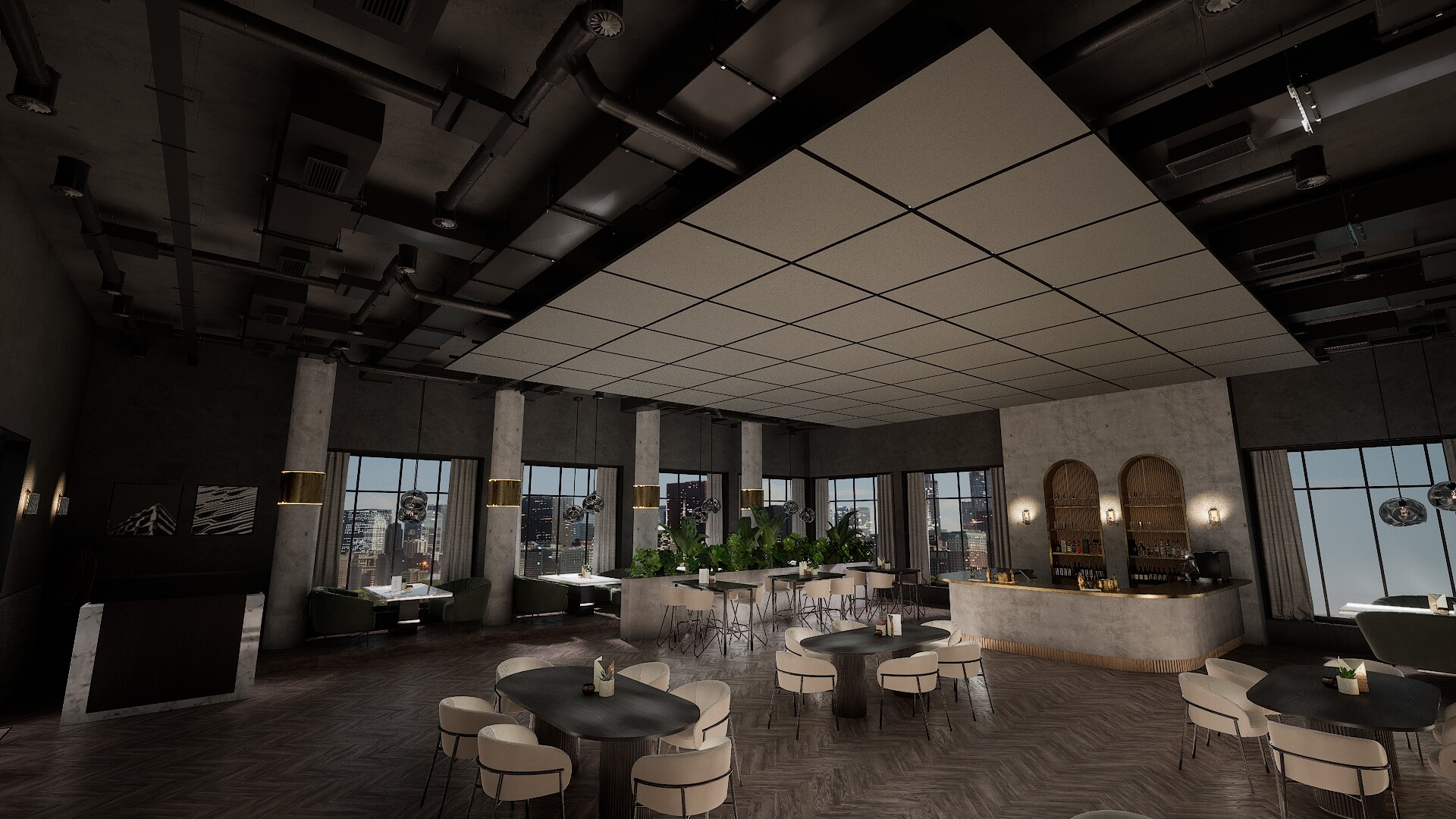Understanding soffit ceilings: Key features and why they matter in design
In architectural design, every detail matters – from the materials you choose to the way structural elements are showcased. One such important element that often deserves more attention is the soffit ceiling. Whether integrated for aesthetic appeal or functional advantages, soffit ceilings play a vital role in both residential and commercial projects. In this blog, we will explore what soffit ceilings are, their essential characteristics, and why architects increasingly consider them a key design feature.

What is a Soffit Ceiling?
A soffit ceiling refers to a section of a ceiling that is lower than the surrounding ceiling. Put simply, it is a more aesthetically-pleasing ceiling finish to the ‘technical’ ceiling above that contains services, pipes and ductwork. While often used in exterior applications like eaves, soffit ceilings are also implemented indoors in a variety of ways to achieve architectural style and functionality.
An important distinction to make is between standard soffit ceilings and exposed soffit ceilings. In a regular soffit ceiling, the soffit is typically covered with panels, creating a clear and smooth appearance. On the other hand, exposed soffit ceilings leave the structural elements, like beams and ducts, visible, often giving a more industrial or modern look. This trend has gained traction in recent years as it adds a raw, contemporary feel to open spaces.
Soffit Ceilings Characteristics
There are several characteristics that define soffit ceilings and influence their use in architecture:
- Materials: Soffit ceilings are typically made from materials like wood, aluminium, fibre cement, or uPVC. Each material offers different benefits in terms of durability, aesthetics, and maintenance.
- Sound Absorption: In spaces where acoustics are important, soffit ceilings can be adapted to improve sound control. Materials like acoustic tiles or baffles can be installed on soffits to reduce echo and enhance sound quality.
- Thermal Efficiency: Soffit ceilings, especially when insulated, can help improve a building’s thermal efficiency by creating an additional barrier between external and internal spaces.
- Customisation: Architects appreciate soffit ceilings for their flexibility in design. Whether opting for concealed or exposed soffits, they can be customised with lighting, ventilation systems, and even decorative features.
Design Perks of Using Soffit Ceilings
Incorporating a soffit ceiling into your design brings a variety of advantages that go beyond simple aesthetics. For example, soffit ceilings can bring enhanced functionality as they are able to hide unsightly ventilation systems, lighting, or structural components, making them functional while maintaining a clean design. Soffit ceilings also allow architects and designers to play with the height, style, and flow of a space. They can mask ductwork or wiring offering a sleek finish, or be left exposed for a more industrial space.
By adding sound-absorbing materials such as Zentia’s Sonify ceiling baffles, architects can significantly enhance the acoustic properties of a space. Baffles are especially useful in large, open areas where noise control is critical, such as offices, school halls, and industrial spaces. Zentia’s Sonify range not only improves acoustics but can also be used as a striking visual element that complements the design of a soffit ceiling.
Can Soffit Boards be Used for Ceilings?
One common question is whether soffit boards – traditionally used for external applications – can be used as an internal ceiling material. The answer is yes, with some considerations. Soffit boards are often durable, water-resistant and low maintenance, making them a good option for certain indoor spaces.
However, here are limitations to consider. Soffit boards, while functional, may not offer the same level of aesthetic flexibility as traditional ceiling materials like plasterboard or gypsum. Additionally, they may lack the acoustic and thermal insulation properties required for certain interior environments. Architects should weigh the practical benefits against the design goals of the project when deciding to use soffit boards for ceilings.
Soffit ceilings offer architects a wealth of opportunities in both form and function. Whether you are aiming for a polished, concealed look or the industrial feel of an exposed soffit ceiling, this design element can enhance the visual appeal and practicality of a space. With Zentia’s dynamic range of products, architects are able to address crucial considerations like acoustics and thermal efficiency, making them a versatile choice for modern projects.